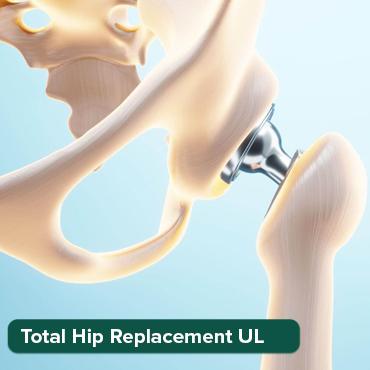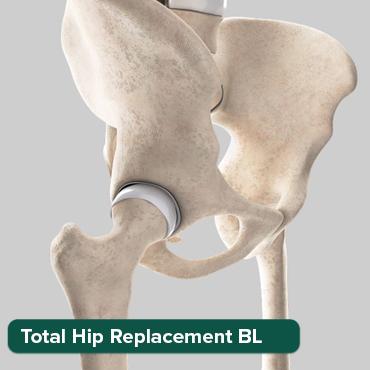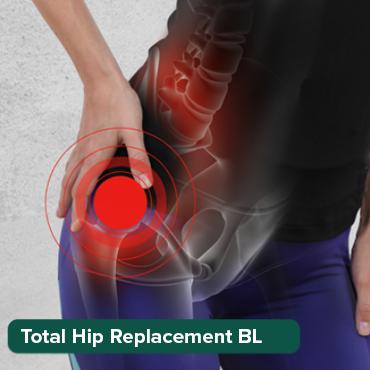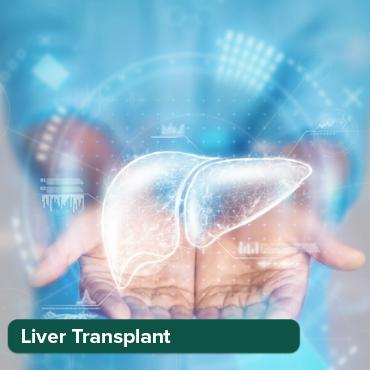
Advanced Robotic Technology Used in Cancer Treatment
30 Oct, 2025
 Healthtrip
Healthtrip- Where is Robotic Surgery Used for Cancer Treatment?
- Why Choose Robotic Surgery for Cancer Treatment?
- Who is a Good Candidate for Robotic Cancer Surgery?
- How Does Robotic Cancer Surgery Work?
- Examples of Robotic Surgery in Cancer Treatment
- Hospitals Using Robotic Surgery for Cancer Treatment
- Conclusion
Robotic Surgery: Precision and Minimally Invasive Techniques
The Da Vinci Surgical System
The Da Vinci Surgical System is at the forefront of robotic-assisted surgery, providing surgeons with enhanced dexterity, visualization, and control. Imagine a surgeon operating with tiny instruments through small incisions, guided by a high-definition 3D view of the surgical site. This enhanced precision leads to less trauma to surrounding tissues, resulting in reduced pain, scarring, and blood loss for the patient. Hospitals like Fortis Escorts Heart Institute in New Delhi utilize this technology for various cancer surgeries, including prostate, kidney, and colorectal cancers. The benefits extend beyond the operating room, as patients often experience shorter hospital stays and quicker return to their daily lives. It's not just about the technology; it's about the improved quality of life for those battling cancer. With Healthtrip, you can learn more about hospitals offering Da Vinci surgeries and connect with experienced surgeons who specialize in these advanced techniques. We're here to make your journey to recovery as smooth and comfortable as possible.
Most popular procedures in India
Benefits of Robotic Surgery Compared to Traditional Methods
Traditional open surgery, while sometimes necessary, can involve large incisions and extensive recovery periods. Robotic surgery offers a less invasive alternative, often leading to better clinical outcomes. Think of it this way: instead of a wide-open road, robotic surgery is like a precise, guided pathway that minimizes disruption. This translates to reduced risk of infection, less post-operative pain, and faster healing. For example, at Memorial Bahçelievler Hospital, patients undergoing robotic surgery for gynecological cancers can often return home sooner and experience fewer complications than with traditional surgery. These advantages are particularly crucial for cancer patients who may already be weakened by the disease or other treatments. Healthtrip understands the importance of choosing the right surgical approach. We provide detailed information about the benefits of robotic surgery and connect you with hospitals offering this advanced option, empowering you to make informed decisions about your care. Consider exploring options at LIV Hospital, Istanbul, a facility renowned for its expertise in robotic surgery and patient-centered approach.
Wellness Treatments
Give yourself the time to relax
Lowest Prices Guaranteed!

Lowest Prices Guaranteed!
Targeted Radiation Therapy with Robotic Assistance
CyberKnife: Precise Radiation Delivery
CyberKnife is a revolutionary robotic radiosurgery system that delivers highly focused radiation beams to tumors with exceptional accuracy. Unlike traditional radiation therapy, CyberKnife can target tumors anywhere in the body, including those previously considered inoperable. Imagine radiation beams sculpted to the exact shape of the tumor, minimizing damage to surrounding healthy tissues. This precision is particularly beneficial for treating tumors near critical organs or delicate structures. Hospitals like Quironsalud Proton Therapy Centre in Madrid are pioneers in using CyberKnife for various cancers. This innovative technology offers patients a non-invasive alternative to surgery or traditional radiation, often with fewer side effects. CyberKnife is like a guided missile for cancer, hitting the target with pinpoint accuracy. Healthtrip can help you navigate the complexities of radiation therapy and connect you with leading experts who specialize in CyberKnife treatments. We ensure you have access to the most advanced and personalized cancer care options available.
Advantages of Robotic Radiation Therapy Over Conventional Methods
Conventional radiation therapy can sometimes damage healthy tissues surrounding the tumor, leading to side effects such as fatigue, nausea, and skin irritation. Robotic radiation therapy, with its unparalleled precision, minimizes these risks. Think of it as comparing a broad brushstroke to a fine-tipped pen – the robotic approach allows for targeted treatment without unnecessary collateral damage. This is especially important for patients undergoing treatment for cancers near vital organs. For instance, Yanhee International Hospital in Bangkok employs advanced robotic radiation techniques to protect critical structures during treatment. These advantages translate to improved quality of life during and after treatment. Healthtrip is committed to providing you with comprehensive information about robotic radiation therapy and connecting you with hospitals that offer state-of-the-art technology and experienced radiation oncologists. Let us assist you in finding the right treatment plan, tailored to your specific needs and circumstances. Consider exploring the advanced capabilities available at Vejthani Hospital in Bangkok, a leading center for cancer care.
Robotics in Cancer Diagnostics and Drug Delivery
Robotic Biopsy: Minimally Invasive Tissue Sampling
Obtaining tissue samples for diagnosis is crucial in cancer care, but traditional biopsies can be invasive and uncomfortable. Robotic biopsy offers a minimally invasive alternative, allowing doctors to precisely target suspicious areas with greater accuracy. Picture a robotically controlled needle navigating through the body to collect a sample with minimal disruption. This reduces the risk of complications and discomfort for the patient. Facilities such as Saudi German Hospital Cairo, Egypt, are increasingly utilizing robotic-assisted biopsies to enhance diagnostic accuracy and speed up the process. This means faster diagnoses and quicker initiation of treatment. Robotic biopsy is like a sophisticated GPS system, guiding doctors to the precise location for sampling. Healthtrip provides access to information and connects you with hospitals that offer this cutting-edge diagnostic tool, ensuring you receive the most accurate and timely diagnosis possible. For those seeking advanced diagnostic options, consider the expertise available at Saudi German Hospital Alexandria, Egypt.
Targeted Drug Delivery Using Nanobots: Future of Cancer Treatment
While still in its early stages, the development of nanobots for targeted drug delivery holds immense promise for the future of cancer treatment. Imagine tiny robots navigating through the bloodstream, delivering chemotherapy drugs directly to cancer cells while sparing healthy tissues. This would minimize the side effects associated with traditional chemotherapy and significantly improve treatment outcomes. Although widespread clinical use is still years away, research is progressing rapidly, and Healthtrip stays abreast of these advancements to bring you the latest information. This futuristic approach is like having an army of miniature soldiers, each programmed to attack cancer cells with precision. Healthtrip is dedicated to keeping you informed about the latest breakthroughs in cancer treatment, providing you with hope and empowering you to make informed decisions about your future. As research evolves, we will ensure you have access to the most innovative and effective therapies available, guiding you towards a healthier tomorrow.
Where is Robotic Surgery Used for Cancer Treatment?
Robotic surgery, a marvel of modern medicine, has broadened its reach significantly in the field of cancer treatment. It’s no longer a futuristic concept but a present-day reality offering hope and improved outcomes for many grappling with cancer. Think of it as the surgeon's hands, but amplified, more precise, and less invasive. This technology empowers surgeons to perform intricate procedures with enhanced dexterity, visualization, and control, which is a game-changer, especially when dealing with delicate tissues and hard-to-reach areas within the body. From bustling metropolitan hospitals to specialized cancer centers, robotic surgery is becoming increasingly accessible, offering a less disruptive path for patients seeking treatment. Across the globe, hospitals are embracing this technology, recognizing its potential to minimize scarring, reduce pain, and shorten recovery times. This means patients can often return to their lives sooner and with a better quality of life post-surgery; it is like getting back on your feet quicker, which is always a good thing, right? Places like Fortis Hospital, Noida and Max Healthcare Saket in India, along with international facilities such as Mount Elizabeth Hospital in Singapore, and select Saudi German Hospital branches like Saudi German Hospital Cairo, Egypt, are at the forefront, showcasing the accessibility and expanding global footprint of robotic surgery in cancer care.
The applications of robotic surgery in cancer treatment are diverse, spanning various types of cancers and surgical procedures. From radical prostatectomies for prostate cancer to partial nephrectomies for kidney cancer, the precision offered by robotic assistance allows for targeted removal of cancerous tissue while preserving healthy organ function. This is particularly crucial in delicate areas where nerve damage or excessive bleeding can lead to long-term complications. Robotic surgery is also employed in the treatment of gynecological cancers, such as endometrial and cervical cancers, as well as colorectal cancers, where minimally invasive techniques can significantly reduce the risk of infection and promote faster healing. Think about it – procedures that once required large incisions and lengthy hospital stays are now being performed through tiny keyhole openings, a testament to the power of technology in transforming patient care. Moreover, in complex cases requiring lymph node dissection or reconstruction, the enhanced visualization and dexterity afforded by the robotic system enable surgeons to perform more thorough and precise dissections, leading to improved oncological outcomes. As Healthtrip continuously seeks to connect patients with cutting-edge medical solutions, understanding the breadth of robotic surgery’s applications is key to empowering informed decisions about cancer treatment options.
Leading healthcare institutions are continually integrating robotic surgery into their comprehensive cancer treatment programs. These hospitals invest in state-of-the-art robotic systems and provide specialized training to their surgical teams, ensuring the highest standards of care. By offering robotic surgery alongside other treatment modalities such as chemotherapy, radiation therapy, and immunotherapy, these centers provide patients with a holistic and personalized approach to cancer management. For instance, facilities like National Cancer Centre Singapore, Singapore General Hospital and Quironsalud Hospital Toledo are known for their multidisciplinary cancer care teams and their commitment to utilizing robotic surgery as part of an integrated treatment plan. The emphasis is not just on removing the cancer but also on minimizing the impact of treatment on the patient's overall well-being. Furthermore, these centers often participate in research studies and clinical trials aimed at further refining robotic surgical techniques and expanding their applications to new types of cancers. This dedication to innovation ensures that patients receive the most advanced and effective care available. As Healthtrip expands its network of partner hospitals, the inclusion of institutions with robust robotic surgery programs will be paramount in providing patients with access to the best possible cancer care options globally. This commitment to excellence is at the heart of Healthtrip’s mission to empower patients on their healthcare journeys.
Why Choose Robotic Surgery for Cancer Treatment?
Robotic surgery offers a multitude of benefits that can significantly improve the patient experience and outcomes compared to traditional open surgery. One of the most compelling advantages is the minimally invasive nature of the procedure. Instead of large incisions, robotic surgery involves small keyhole incisions through which the surgical instruments and a high-definition camera are inserted. This leads to reduced blood loss during surgery, less post-operative pain, and a lower risk of infection. Smaller scars are also a welcome aesthetic bonus, contributing to improved patient satisfaction and body image. Imagine recovering from a major surgery with less pain and discomfort, allowing you to get back on your feet sooner – that’s the promise of robotic surgery. For Healthtrip, this translates to connecting patients with options that prioritize not just treatment effectiveness but also their overall quality of life during and after the surgical process. Furthermore, the reduced trauma to the body often results in shorter hospital stays, allowing patients to return home and resume their normal activities more quickly. This is particularly important for cancer patients who may require additional treatments such as chemotherapy or radiation therapy, as quicker recovery times can help them stay on track with their overall treatment plan.
The precision and dexterity afforded by robotic technology enhance the surgeon's capabilities, especially in complex surgical procedures. The robotic arms offer a greater range of motion and maneuverability compared to the human hand, allowing surgeons to access hard-to-reach areas with ease. The high-definition, three-dimensional visualization system provides a magnified view of the surgical site, enabling surgeons to differentiate between cancerous and healthy tissue with greater accuracy. This is especially critical when operating near vital organs or nerve bundles, where even minor errors can have significant consequences. Think of it as having a surgeon with super-human precision and vision, leading to more accurate tumor removal and preservation of healthy tissue. This precision translates to better functional outcomes and a reduced risk of complications such as urinary incontinence or erectile dysfunction following prostate cancer surgery. For Healthtrip, this means connecting patients with advanced surgical options that prioritize both oncological control and preservation of quality of life, empowering them to make informed decisions about their treatment. Moreover, the improved ergonomics for the surgeon can lead to reduced fatigue and improved concentration, potentially resulting in more consistent and successful surgical outcomes. By optimizing the surgical environment for both the patient and the surgeon, robotic surgery offers a win-win solution for cancer treatment.
Robotic surgery can lead to improved oncological outcomes in certain types of cancers. The enhanced precision and visualization allow for more complete removal of cancerous tissue, reducing the risk of recurrence. In some cases, robotic surgery may also enable surgeons to perform nerve-sparing procedures, preserving important functions such as bladder control and sexual function. Studies have shown that robotic prostatectomy, for example, can result in lower rates of positive surgical margins and improved long-term cancer control compared to traditional open surgery. Similarly, in gynecological cancers, robotic surgery can facilitate more thorough lymph node dissection, which is crucial for staging the cancer and determining the need for adjuvant therapies. By offering the potential for better cancer control and improved functional outcomes, robotic surgery can significantly impact the long-term prognosis for cancer patients. It’s about not just surviving but thriving after cancer treatment. Healthtrip understands the importance of providing patients with access to these advanced surgical options, empowering them to make informed decisions that align with their goals and values. The availability of robotic surgery as a treatment option can provide patients with hope and confidence, knowing that they are receiving the best possible care with the potential for optimal outcomes. By prioritizing patient-centered care and access to innovative technologies, Healthtrip strives to improve the lives of cancer patients around the world.
Who is a Good Candidate for Robotic Cancer Surgery?
Determining whether someone is a suitable candidate for robotic cancer surgery involves several factors, and it's not a one-size-fits-all answer. It depends on the type and stage of cancer, the patient's overall health, and the surgeon's expertise. Generally, robotic surgery is often considered for patients with localized cancers that have not spread extensively beyond the primary site. It's particularly well-suited for cancers in areas that are difficult to access with traditional open surgery, such as the prostate, kidneys, uterus, and colon. However, even within these categories, there are nuances that need to be considered. For instance, a patient with a large tumor or significant scar tissue from previous surgeries might not be an ideal candidate for a fully robotic approach. It's crucial to have a thorough evaluation by a multidisciplinary cancer care team to assess the feasibility and appropriateness of robotic surgery. This team typically includes surgeons, oncologists, radiologists, and other specialists who work together to develop a personalized treatment plan. Finding the right fit is crucial, and it starts with open communication and a comprehensive assessment of individual needs.
The patient's overall health plays a crucial role in determining their suitability for robotic surgery. Patients with significant underlying medical conditions, such as heart disease, lung disease, or uncontrolled diabetes, may be at higher risk of complications during and after surgery. These conditions can affect the patient's ability to tolerate anesthesia and the stress of surgery, as well as their ability to heal properly. However, this doesn't automatically disqualify them from robotic surgery. In many cases, these conditions can be managed and optimized prior to surgery to minimize the risks. For example, patients with heart disease may need to undergo cardiac testing and medication adjustments before being cleared for surgery. Similarly, patients with diabetes may need to work closely with their endocrinologist to ensure their blood sugar levels are well-controlled. The key is to have a comprehensive assessment of the patient's overall health and to address any underlying medical issues before proceeding with surgery, emphasizing that a holistic view of the patient ensures the best possible outcome. Healthtrip can assist patients in finding centers with multidisciplinary teams capable of providing this level of comprehensive assessment and pre-operative optimization, facilitating access to the most appropriate and safest treatment options.
The surgeon's experience and expertise are paramount when considering robotic cancer surgery. Robotic surgery requires specialized training and a significant learning curve. Surgeons must be proficient in using the robotic system and have a thorough understanding of the surgical anatomy and techniques involved. It's important to choose a surgeon who has extensive experience performing robotic surgery for the specific type of cancer being treated. Inquire about the surgeon's training, certification, and the number of robotic surgeries they have performed. Don't hesitate to ask questions and seek clarification on any concerns you may have. A skilled and experienced surgeon can significantly improve the safety and effectiveness of robotic surgery, leading to better outcomes for the patient. Healthtrip can play a vital role in connecting patients with highly qualified robotic surgeons at reputable medical centers around the world, ensuring access to the best possible surgical expertise. By providing information about surgeon credentials and hospital accreditations, Healthtrip empowers patients to make informed decisions about their surgical care, knowing they're in capable hands. Remember, finding the right surgeon is as important as finding the right surgery.
Also Read:
How Does Robotic Cancer Surgery Work?
Imagine a surgeon, not wielding traditional instruments, but seated comfortably at a console, his hands guiding a robot with incredible precision. That's essentially what robotic cancer surgery is all about! Tiny incisions, specialized instruments, and a high-definition 3D view combine to offer a minimally invasive approach to tackling complex tumors. The surgeon controls the robotic arms, which mimic their hand movements with enhanced dexterity and range of motion. This allows for intricate maneuvers in tight spaces, far exceeding the capabilities of traditional open surgery. The system filters out any tremors from the surgeon's hand, ensuring smooth, accurate movements, even during the most delicate procedures. Think of it as surgery with a superpower—enhanced vision, precision, and control, all aimed at removing cancerous tissue while preserving healthy surrounding structures. This translates to less pain, smaller scars, and a faster recovery for the patient. Healthtrip can help you navigate the world of robotic surgery and connect you with leading hospitals offering this advanced technology.
The Da Vinci Surgical System
The Da Vinci Surgical System is the most widely used robotic surgery platform, and it's truly a marvel of modern engineering! It consists of three main components: the surgeon console, the patient-side cart, and a high-definition 3D vision system. At the console, the surgeon has a magnified, three-dimensional view of the surgical site, providing unparalleled detail and depth perception. This allows them to see structures with greater clarity than traditional surgery. The patient-side cart houses the robotic arms, which are equipped with specialized instruments designed for specific surgical tasks. These instruments can rotate 360 degrees, allowing the surgeon to access hard-to-reach areas with ease. The system translates the surgeon's hand movements into precise, real-time movements of the robotic arms. It’s like having incredibly skilled, miniature surgeons working inside the patient's body! The system also incorporates safety features that prevent the robotic arms from exceeding the surgeon's intended range of motion, ensuring patient safety throughout the procedure. This technology is a game-changer, and Healthtrip is here to help you understand how it can benefit you.
Examples of Robotic Surgery in Cancer Treatment
Robotic surgery has become a vital tool in the fight against cancer, offering less invasive and more precise treatment options for a variety of malignancies. For instance, in prostate cancer, robotic prostatectomy allows surgeons to remove the prostate gland with incredible accuracy, minimizing damage to surrounding nerves and reducing the risk of urinary incontinence and erectile dysfunction. In gynecologic cancers, such as uterine and cervical cancer, robotic surgery enables surgeons to perform hysterectomies and lymph node dissections through small incisions, leading to faster recovery times and reduced scarring. Similarly, in colorectal cancer, robotic surgery can be used to remove tumors in the colon and rectum with greater precision, preserving bowel function and minimizing the need for a colostomy. Even in complex cases of lung cancer, robotic-assisted lobectomy (removal of a lung lobe) offers a less invasive alternative to traditional open surgery, resulting in less pain and a shorter hospital stay. The possibilities are vast, and Healthtrip can guide you through the different types of robotic surgeries available for your specific condition.
Specific Cancer Types and Robotic Procedures
Let's get into the specifics! Robotic surgery offers compelling advantages across various cancer types. In kidney cancer, partial nephrectomy, the removal of only the cancerous part of the kidney, can be performed robotically with exceptional precision, preserving kidney function. For bladder cancer, robotic cystectomy (bladder removal) and reconstruction offer improved outcomes and quality of life. Head and neck cancers, often challenging to treat due to their location, can also benefit from robotic surgery, allowing for precise tumor removal while minimizing damage to vital structures like the vocal cords and swallowing muscles. In thoracic surgery, robotic-assisted mediastinal tumor resection provides a minimally invasive approach to removing tumors in the chest cavity. Even in pancreatic cancer, where surgery is often complex, robotic techniques are being explored to improve precision and reduce complications. These examples demonstrate the versatility and potential of robotic surgery in cancer treatment. Healthtrip is dedicated to providing you with the information you need to make informed decisions about your care, including the suitability of robotic surgery for your specific situation.
Also Read:
Hospitals Using Robotic Surgery for Cancer Treatment
Many leading hospitals worldwide have embraced robotic surgery as a cornerstone of their cancer treatment programs. In India, hospitals like Fortis Memorial Research Institute, Fortis Hospital, Noida, Max Healthcare Saket offer a wide range of robotic surgical procedures. In Turkey, LIV Hospital, Istanbul and Hisar Intercontinental Hospital are renowned for their expertise in robotic cancer surgery. In Thailand, Bangkok Hospital and Vejthani Hospital are at the forefront of robotic surgery, offering cutting-edge technology and experienced surgeons. In Spain, QUIRONSALUD PROTON THERAPY CENTRE and Hospital Quirónsalud Cáceres provide comprehensive cancer care, including robotic surgery. In Singapore, Mount Elizabeth Hospital and Singapore General Hospital are recognized for their advanced surgical capabilities. These are just a few examples of the many hospitals around the world offering robotic surgery for cancer treatment. Healthtrip can help you identify the best hospitals for your specific needs, considering factors such as expertise, technology, and location.
Factors to Consider When Choosing a Hospital
Selecting the right hospital for robotic cancer surgery is a crucial decision that requires careful consideration. First and foremost, look for a hospital with a strong track record of success in the specific type of robotic surgery you need. Experienced surgeons are essential, so research their credentials and the number of procedures they've performed. The hospital should also have state-of-the-art technology and a dedicated robotic surgery team, including nurses, technicians, and anesthesiologists. Patient testimonials and reviews can provide valuable insights into the hospital's quality of care and patient satisfaction. It's also important to consider the hospital's location, cost, and insurance coverage. Finally, don't hesitate to ask questions and seek a second opinion. Healthtrip can help you gather information, compare hospitals, and make an informed decision that's right for you. Remember, choosing the right hospital is a vital step in ensuring a successful outcome.
Also Read:
Conclusion
Robotic surgery has revolutionized cancer treatment, offering a less invasive, more precise, and potentially more effective approach for many patients. With its enhanced vision, dexterity, and control, robotic surgery allows surgeons to perform complex procedures with greater accuracy and minimal damage to surrounding tissues. This translates to reduced pain, faster recovery times, and improved outcomes for patients. While not suitable for every patient or every type of cancer, robotic surgery offers a valuable option for those seeking the most advanced and minimally invasive treatment available. The information is power, and Healthtrip is committed to empowering you with the knowledge you need to make informed decisions about your cancer care. From understanding the benefits of robotic surgery to finding the right hospital and surgeon, Healthtrip is your trusted partner every step of the way. Together, we can navigate the complexities of cancer treatment and help you achieve the best possible outcome. < /p>
Related Blogs
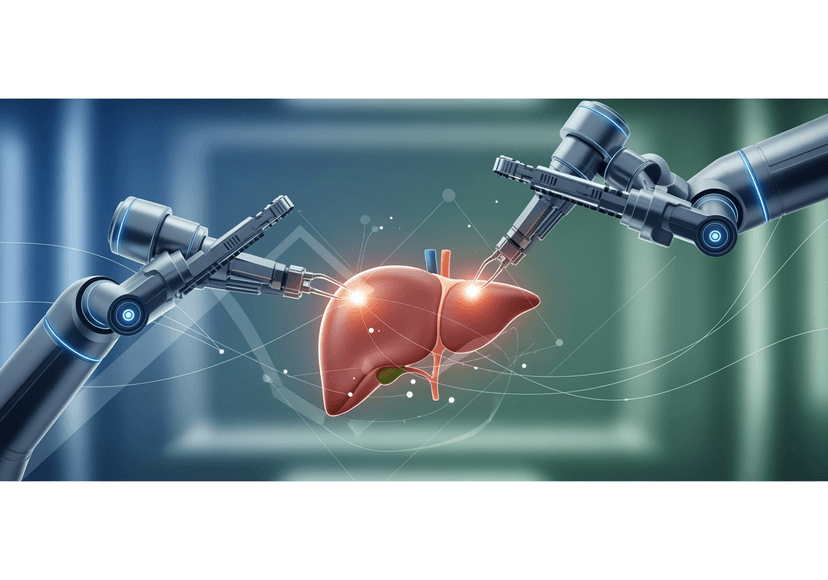
Advanced Robotic Technology Used in Liver Transplant
Detailed insights into liver transplant – doctors, hospitals, technology, recovery,

How Healthtrip Supports Foreign Patients for Liver Transplant in India
Detailed insights into liver transplant – doctors, hospitals, technology, recovery,

Top Medical Packages for Liver Transplant Offered by Healthtrip
Detailed insights into liver transplant – doctors, hospitals, technology, recovery,
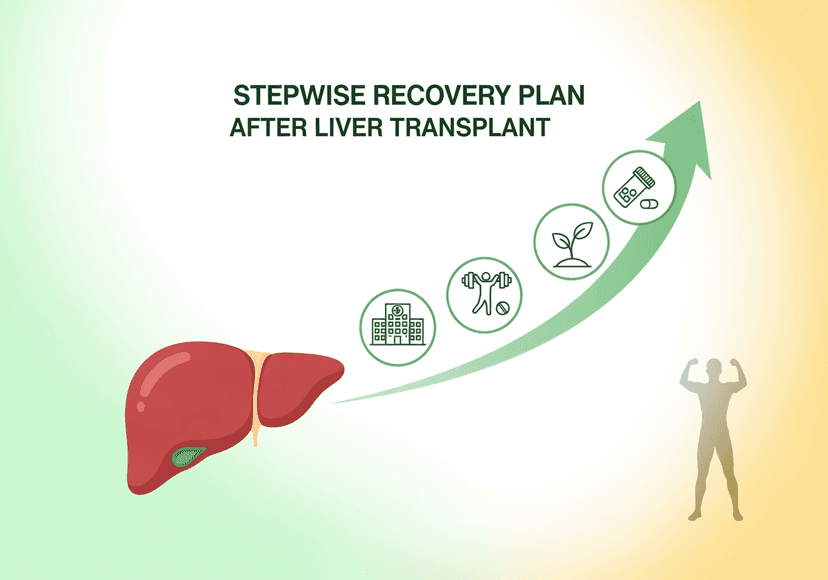
Stepwise Recovery Plan After Liver Transplant
Detailed insights into liver transplant – doctors, hospitals, technology, recovery,

Choosing the Right Surgeon for Liver Transplant
Detailed insights into liver transplant – doctors, hospitals, technology, recovery,

Healthtrip Experts Explain the Complete Liver Transplant Process
Detailed insights into liver transplant – doctors, hospitals, technology, recovery,
